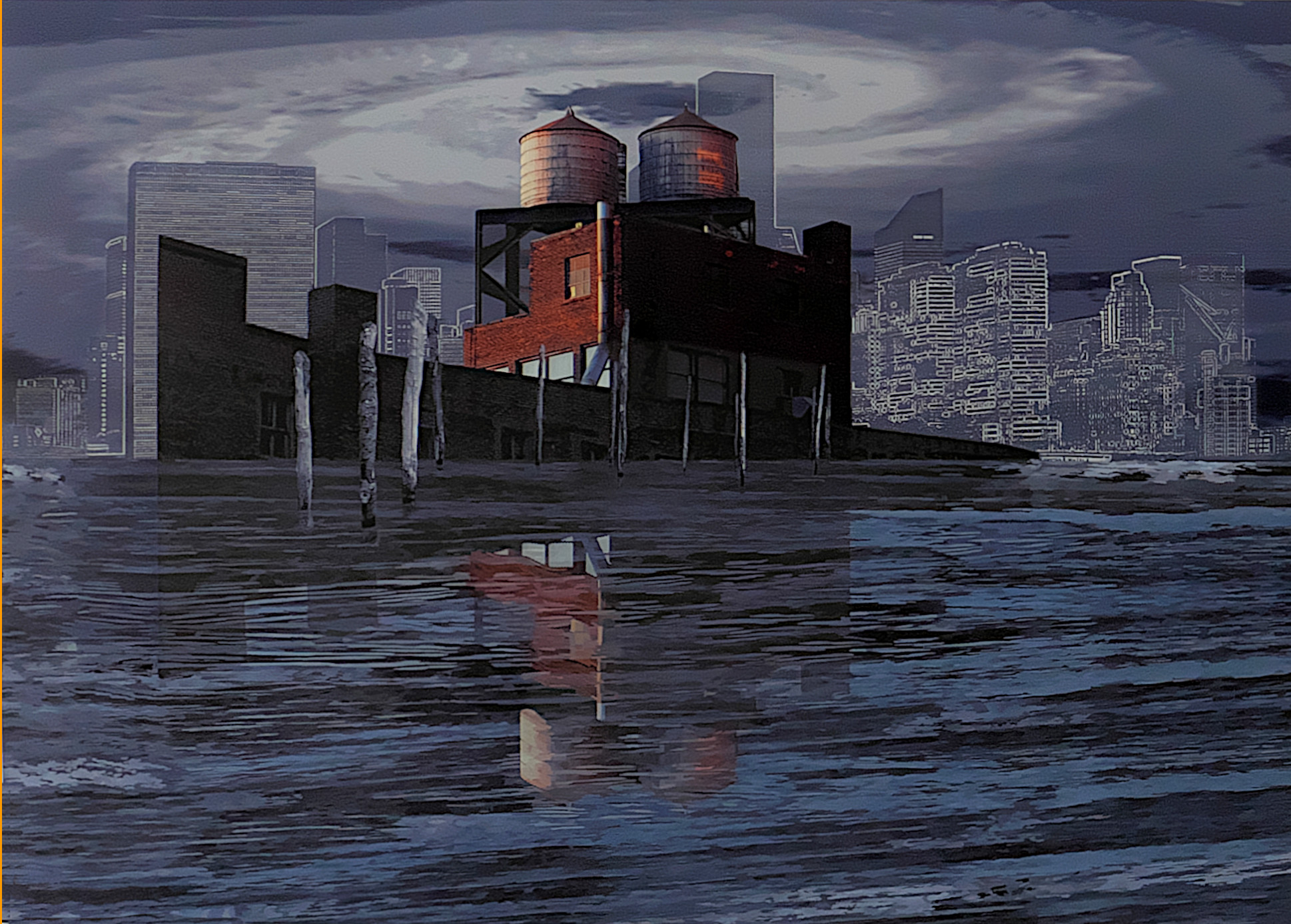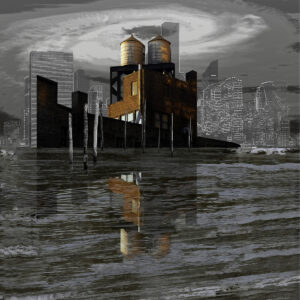Irene, Sandy, Andrea, Arthur, Bill, Bonnie, Matthew, Cindy, Jose, Maria, Philippe, Gordon, Michael. Thirteen names for thirteen cyclones during the past decade amongst a list of eighty-four that have affected the state of New York since the 17th century (1).
New Yorkers are currently overwhelmed by the Covid 19 disaster. But the worst would be to forget climate change threats. Fighting a pandemic and in the same time facing a major flood is not science fiction: the department of atmospheric science, Colorado university, anticipates an above average probability for major hurricanes along the US coastline in 2020 (2). And according to the sea-level projections assessed by AJ. Garner and Al. (3), major floods could happen now every 5 years.
What has not yet been said about urban flood management? Beyond an exhaustive literature, recalling the different options balancing mitigation and adaptation, New York City looks to be the perfect example of a paradox generating both admiration and frustration. The commitment of local urban communities to improve the city resilience has been remarkable as shown by many citizens’ initiatives. The exhibition organized in September 2019 by the Queens museum on the way stewardship was assessed and mapped spoke for itself (4). But though flooding risks awareness led to ambitious and costly mitigation projects, for which funding were not guaranteed, lower Manhattan, before being locked down, looked to be a never-ending building site ignoring the threats to come.
As underlined by the World Meteorological Organization (5), the disparity between the highest incomes and the lowest will have a considerable effect on the ability of the community to plan for, manage and recover from urban floods. Those at the higher income levels will enjoy more access to services, while those at the lower income levels will be left out of decisions. Unfair social situations due to a lack of appropriate governance, itself triggered by exacerbated liberalism, cast doubt on the meaning of urban resilience. Some argue that “just” and “unjust” UR needs to be differentiated (6). What should be a way to shift to new paradigms, to understand that “coping” and “adaptation” are not interchangeable, turns into disillusionment as expressed by A. Townsend, president of Star City Group (7) who decided to leave the plain and move to higher ground.
This shows that it is high time to recall some fundamentals about the concept. No one says that it is easy. But approximations often lead to misleading ideas. In one of the most interesting articles published on the way (urban) transformations are interlinked (8), T. Elmqvist & Al. explain why urban resilience and sustainability, though complementary, should find respectively their “raison d’être” in redundancy and efficiency, and not the other way round. The way both concepts interact, provides the appropriate theoretical background to better understand urban solutions. Decisions makers would do well to be inspired by such reading, be it to prepare the pandemics’ aftermath or the unavoidable coming flooding.
Is NYC retreat inevitable? Are citizens ready to lose the richness of intricate processes nurtured by growth and development both in technological and social aspects (9)? Will New-Yorkers rewrite their history and draw a line on the cultural legacy inherited from centuries of history? For better or for worse, the way the city will heal from the current trauma will show if we have reached a turning point leading to more sustainable perspectives.
In the below work, water tanks built one century ago overcame the flooding. Their iconic status has replaced their primary function. They seem to warn us not to forget where we are coming from. While background Manhattan buildings resonate as a symbol of a past magnificence, the Venetian wooden piles of the foreground question how a coastal city facing climate change could possibly bounce forward.

- https://www.revolvy.com/page/List-of-New-York-hurricanes
- https://tropical.colostate.edu/media/sites/111/2020/04/2020-04.pdf
- https://www.pnas.org/content/pnas/114/45/11861.full.pdf
- https://ny.curbed.com/2019/9/16/20863114/who-takes-care-of-new-york-queens-museum-exhibit
- https://www.floodmanagement.info/publications/tools/APFM_Tool_14.pdf
- https://journals.sagepub.com/doi/10.1177/1078087419910827
- https://newcities.org/the-big-picture-our-inevitable-retreat/
- https://www.nature.com/articles/s41893-019-0250-1
- https://doi.org/10.1016/S2212-5671(14)00929-0

Interesting future vision! We have also been creating some scenarios for a landscape under changed environmental conditions. Our example is a world heritage cultural landscape in SE Sweden. See here: http://oland2050.nu
Thank you Cornelius. Your publication “Embracing change: how cultural resilience is increased through cultural heritage” is a source of inspiration for my work. Still at the “puzzle stage”. But taking shape and hopefully on line soon.